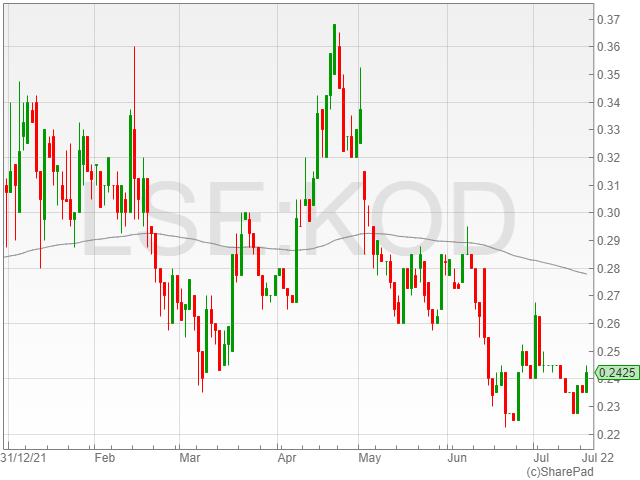Kodal Minerals shares rose 1.1% to 0.2p in late afternoon trading on Tuesday after the company announced a widened group loss before other comprehensive income of £903,000 in FY 2022 against £623,000 the last year.
The West Africa-focused gold and lithium mining group reported a 370% climb in exploration and evaluation expenditure of £2.5 million compared to £542,000 year-on-year.
Kodal Minerals confirmed a 63% growth in the value of its gold projects in Mali and Cote d’Ivoire to £2.4 million from £1.4 million.
The company also noted a 20% increase in the value of its Bougouni lithium project in Mali to £9 million compared to £7.4 million in the previous year.

The mining firm highlighted a cash balance of £1 million at 31 March 2022 against £2.4 million in FY 2021, rising to a balance of £3.3 million on 8 July after a successful £3 million fundraise, before expenses.
Meanwhile, Kodal Minerals reported positive results from its exploration programmes at its Fatou and Nielle gold projects, with identified wide gold intersections and high-grade gold mineralised areas.
In addition, infill geochemical sampling at its Dakabala project resulted in high-grade surface samples at new discovery zones.
Kodal Minerals also confirmed it had been granted the mining licence for its 100% owned Bougouni lithium project, which the group reported was fully permitted for development and construction.
“We are in the enviable position of owning 100% of the concessions of what I believe will become one of the most significant lithium spodumene producing projects in West Africa, and the first in Mali,” said Kodal Minerals CEO Bernard Aylward.
“The prices of lithium spodumene have risen exponentially as global demand for this critical mineral shows no sign of abating driven by the green agenda and the EV (electric vehicle) revolution.”
“Looking ahead, we will continue to invest in exploration at our gold projects following the excellent results from our reverse core drilling campaign. However, our priority is to de-risk the Bougouni Project, by further reducing expected operating costs whilst advancing discussions with potential partners on funding for construction with the view of bringing the Project into production.”
